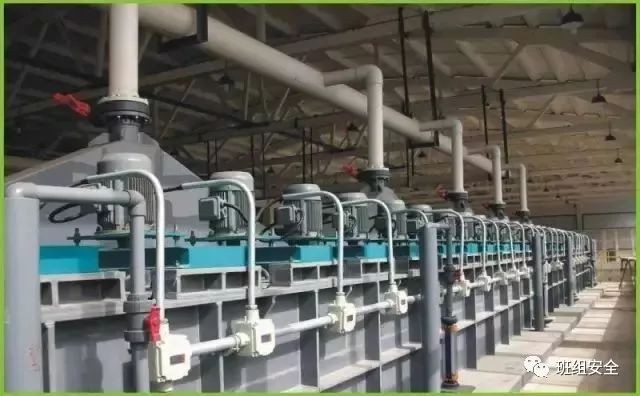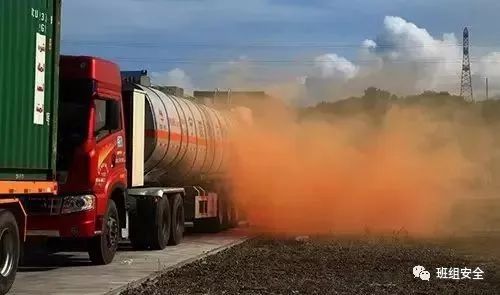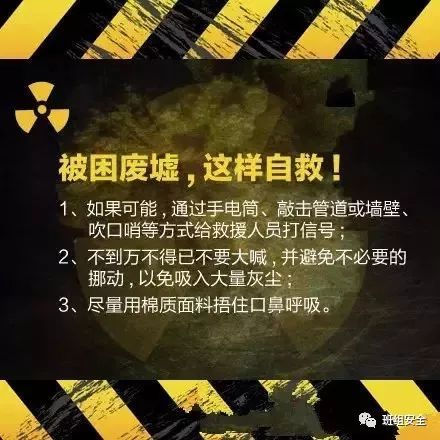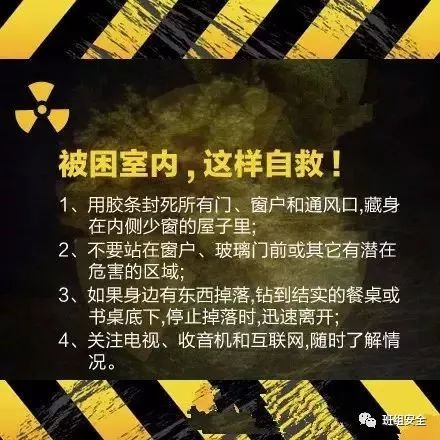1. Strengthen the management of open fires, and no smoking is allowed in the factory. 2. In the production area, minors are not allowed to enter, 3. During work hours, they are not allowed to sleep, do private work, leave the post and do nothing to do with production. 4. Do not drink alcohol before or during the class. 5. Do not use flammable liquids such as gasoline to scrub equipment, utensils and clothing. 6. Do not wear labor protection articles according to regulations, and are not allowed to enter production positions. 7. Equipment with incomplete safety devices is not allowed to be used. 8. Equipment and tools that are not in charge of their own are not allowed to be used. 9. Safety measures are not implemented when the equipment is overhauled, and it is not allowed to start maintenance. 10. The equipment after shutdown inspection is not allowed to be used without thorough inspection. 11. If you do not have a high-altitude operation permit, do not wear seat belts, scaffolding, or springboards, and you are not allowed to climb the work. 12. The asbestos tile is not fixed on the springboard and is not allowed to work. 13. Mobile power tools without an electric shock protector are not allowed to be used. 14. Employees who have not obtained a safety operation permit are not allowed to work independently; workers of special types of work are not allowed to work without obtaining evidence. ▲Chemical plant equipment 1. Must apply, apply for a certificate, and get approval. 2. A safe isolation must be made. 3. Power must be cut off and safety lights must be used. 4. Replacement and ventilation must be carried out. 5. Safety analysis must be performed as required by time. 6. Must wear the specified protective tools. 7. Someone must be supervised outside the device and stick to the post. 8. There must be rescue equipment measures. ▲ hot work 1. The fire certificate is not approved and the fire is prohibited. 2. Not reliable isolation from the production system, prohibiting the fire 3. No cleaning, disqualification, prohibiting the fire 4. Do not eliminate the surrounding flammable materials, prohibit the fire 5. Do not analyze the fire on time, prohibit the fire 6. No fire fighting facilities, no fire 1. Strictly implement the handover operator 2. Strictly enforce the inspection tour 3. Strict control of process indicators 4. Strictly perform the operation (issue) 5. Strictly observe labor discipline 6. Strictly enforce safety regulations 1. It is strictly forbidden to drive without a license. 2. It is strictly forbidden to drive after drunkenness. 3. It is forbidden to drive speedy and empty block. 4. It is strictly forbidden to drive sickness. 5. It is strictly forbidden to mix and transport people. 6. It is strictly forbidden to load and drive. 7. It is strictly forbidden to enter the fire-fighting zone without firearms. ▲Chemical plant explosion Peroxygen explosion 2. Gases explode together 3. Violation of the fire caused by explosion 4. Static electricity causes fire explosion 5. Compressed carbon deposits cause fire explosion 6. Pressure vessel fire explosion 7. Use of volatile liquids such as gasoline to scrub equipment, fire and explosion 8. Failure of the safety device caused the fire and explosion 9. Negative pressure inhalation of air causes fire explosion 10. Pressure-induced operation causes fire and explosion 1. Operation error, neglect warning 2. Unable to start, shut down, move the machine, no signal is given when starting or shutting down the stop 3. The switch is not locked, causing accidental rotation, power or leakage 4. Using unsafe equipment, the safety device blockage has lost its effect 5. Use unsafe equipment, work by hand instead of tools, venture into dangerous places Transportation of a dangerous chemical ▲Leakage in the transportation of hazardous chemicals 1. Transportation of dangerous chemicals must comply with relevant national transportation regulations and handle relevant transportation procedures. The transportation unit should assign special personnel to escort. The transporter and the escort must have strong sense of responsibility, be familiar with the nature of hazardous chemicals and safety protection knowledge, and under abnormal circumstances. Critical treatment. 2. The transport unit and individual must strictly inspect the shipment, and the dangerous chemicals that are not tightly packed, damaged, the name and label are not obvious, and the tanks that do not meet the safety requirements may not be shipped. 3. Dangerous chemicals handling and transportation personnel should wear corresponding protective equipment as required during loading and unloading and transportation. They must be handled gently to prevent collision, throwing and dumping. Employees who handle loading and unloading should always carry out safety education and training, and must have fixed personnel with certain business knowledge to serve. 4. Vehicles such as vehicles that transport flammable and explosive hazardous chemicals should be thoroughly cleaned before they can continue to ship other highly toxic chemicals. Items that are incompatible with each other must not be shipped at the same time. 5. It is forbidden to transport flammable and explosive dangerous chemicals with dump trucks and battery vehicles. When vehicles and spark-prone vehicles enter the production area, the exhaust pipe should be equipped with a flame arrester. 2. Storage of dangerous chemicals 1. Hazardous chemicals must be placed in the warehouse in time and should not be stacked in the open air. 2. Hazardous chemicals should be stored at the place of formulation, and should not be mixed with other substances. The warehouse should be dry, free of water, water, and moisture-proof items should be placed on the wooden board and placed neatly. 3. All open fires are strictly forbidden in the library. No smoking, no fires and motor vehicles with fire, fire and external fires are allowed. 4. Warehouse management personnel should select personnel who have strong sense of responsibility, special training, and familiar with the physical and chemical properties of highly toxic chemicals and safety management knowledge. 5. Dangerous chemical warehouse management personnel must achieve “four without one guarantee†and strictly abide by the “five pairs†system (“four without one guarantee†and no stolen, no loss, no violation of regulations, no accidents, and security; The five-double system is double custody, double collection, double use, double lock, double ledger. Adhere to standardized management, and strictly prohibit mixed storage and mixed transportation. 6. Hazardous chemicals must have a management system for the release and delivery of warehousing, and the competent authorities should strengthen inspections as required and strictly enforce them. 7. According to different dangerous chemicals, there should be corresponding signs and graphic signs in the warehouse, equipped with corresponding fire-fighting equipment and protective equipment. 8. After the work of the warehouse staff is over, a safety fire check should be carried out to cut off the power supply. Use of three hazardous chemicals 1. The place of use of hazardous chemicals and operators must be equipped with special protective equipment. Work clothes must be replaced after the operation, otherwise they must not leave the workplace. 2. It is strictly forbidden to directly touch dangerous chemicals by hand and not to eat in hazardous chemical places. 3. The use of hazardous chemicals should be equipped with a certain amount of antidote for emergency use. 4. It is forbidden to use an insulated hose to insert into the flammable liquid tank for pipetting. 5. When the barrel or can is filled with poisonous or volatile drugs, it must be tightened and sealed to prevent volatilization or splashing, and moved to a well-ventilated place. If it cannot be disposed of, it can be solved in coordination with the Ministry of Safety and Security. 6. When picking, it is forbidden to roll on the ground to prevent friction and impact. In the process of picking, it is necessary to consider whether the environmental impact poses a danger to the material picking, otherwise it is necessary to take safety measures. 7. In the event of equipment failure, liquid leakage, changing process conditions, from automatic to manual, appropriate precautions must be taken during operation. 8. Containers containing dangerous chemicals must be cleaned before and after use. When they meet, the raw materials will be burned. It is strictly prohibited to mix before and after. Once the dangerous chemicals are scattered on the ground, they should be disposed of immediately. 9. Waste slag, waste gas, etc. after use of hazardous chemicals shall be handled by the user. Strict implementation of environmental protection regulations shall not be carried out in a private manner and pollute the environment. If it cannot be handled by itself, it shall be reported in time and processed by the Ministry of Safety and Security in accordance with relevant regulations. Four hazardous chemicals disposal 1. Packing barrels, plastic barrels and plastic bags after use of hazardous chemicals must be strictly managed. If they have the ability and qualification treatment, they should be disinfected by themselves, and there is a special person responsible for handling. If there is no processing capacity, they must be handed over to the manufacturer or manufacturer. Recycling treatment. 2. The disposal of hazardous chemical waste must be submitted in advance, and careful safety measures must be formulated and approved by the relevant authorities before they can be disposed of. Problems that may be encountered in large chemical explosions: 1. Scratches, falls, and bleeding caused by shock waves at a location relatively far from the explosion. 2. Temporary communication interruption caused by a large amount of communication in a short period of time. 3. Traffic congestion caused by a large number of people transferring. 4. Unknown explosive damage, secondary explosions, and possible toxic fumes. How to save yourself? Optical Mirrors,Optical Glass Mirrors,Metallic Coating Mirrors,Mirror With Hole Zoolied Inc. , https://www.zoolied.com












Detailed explanation of the nine safety operations in industrial production areas
NO1: 14 in the production area is not allowed